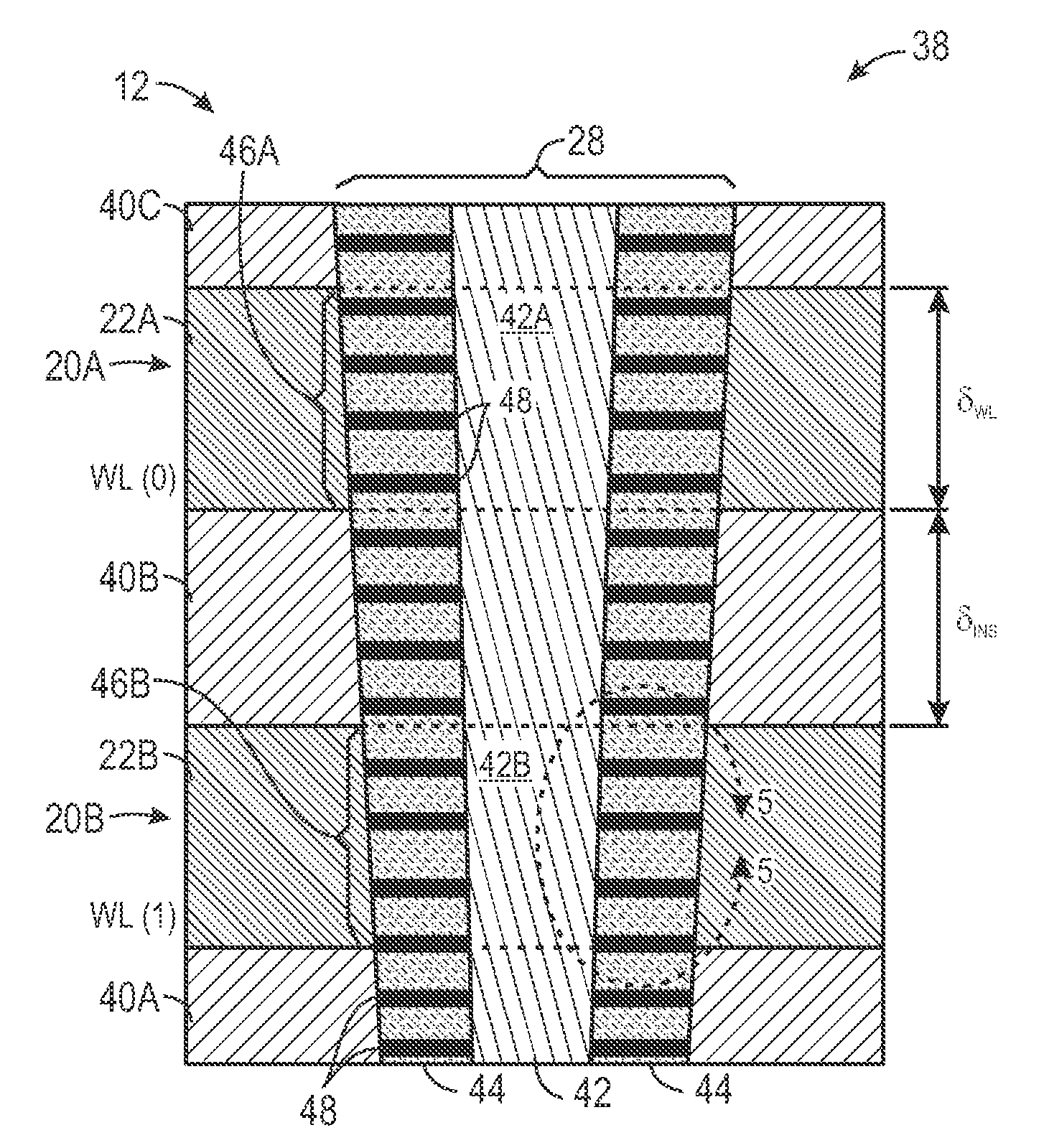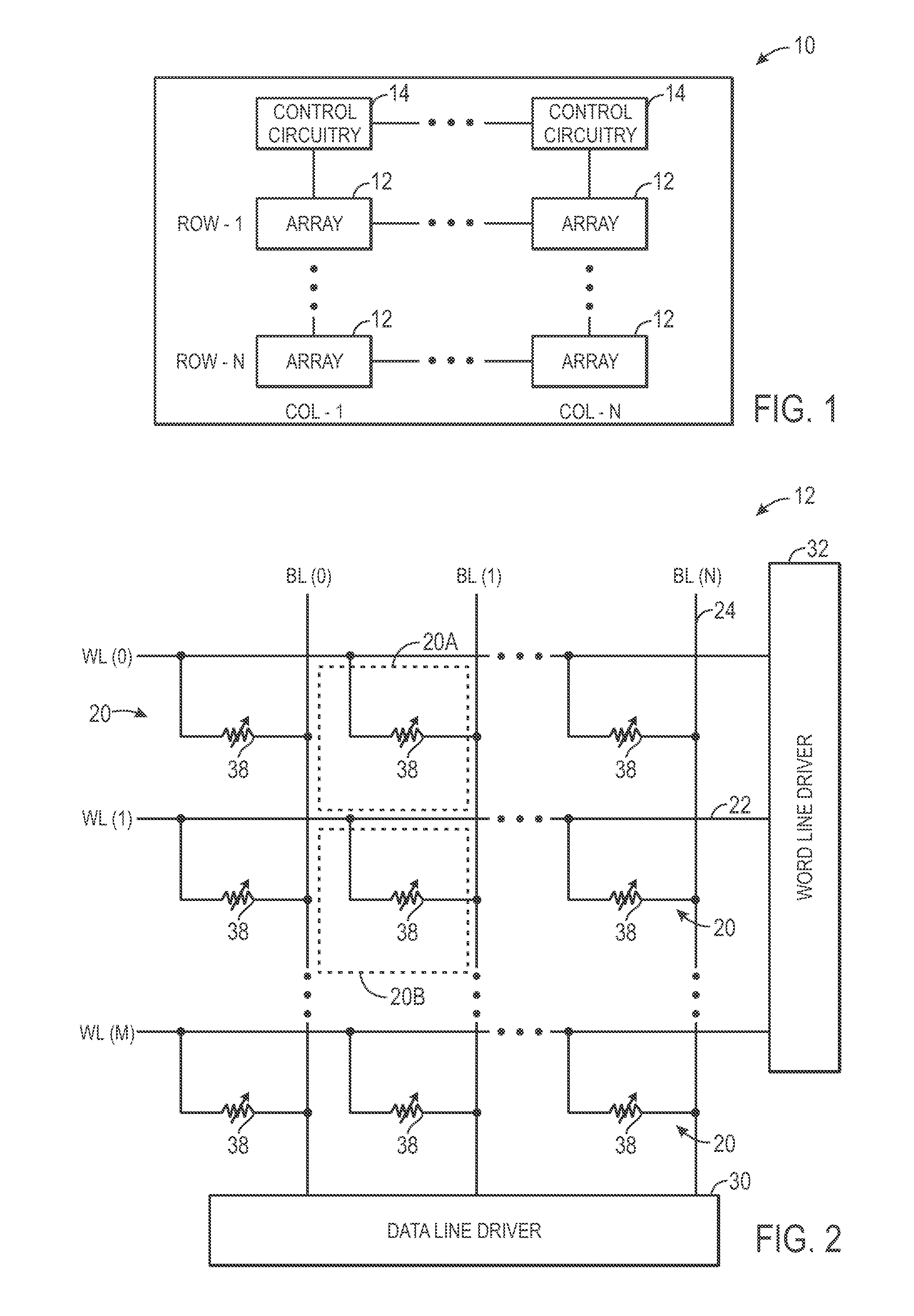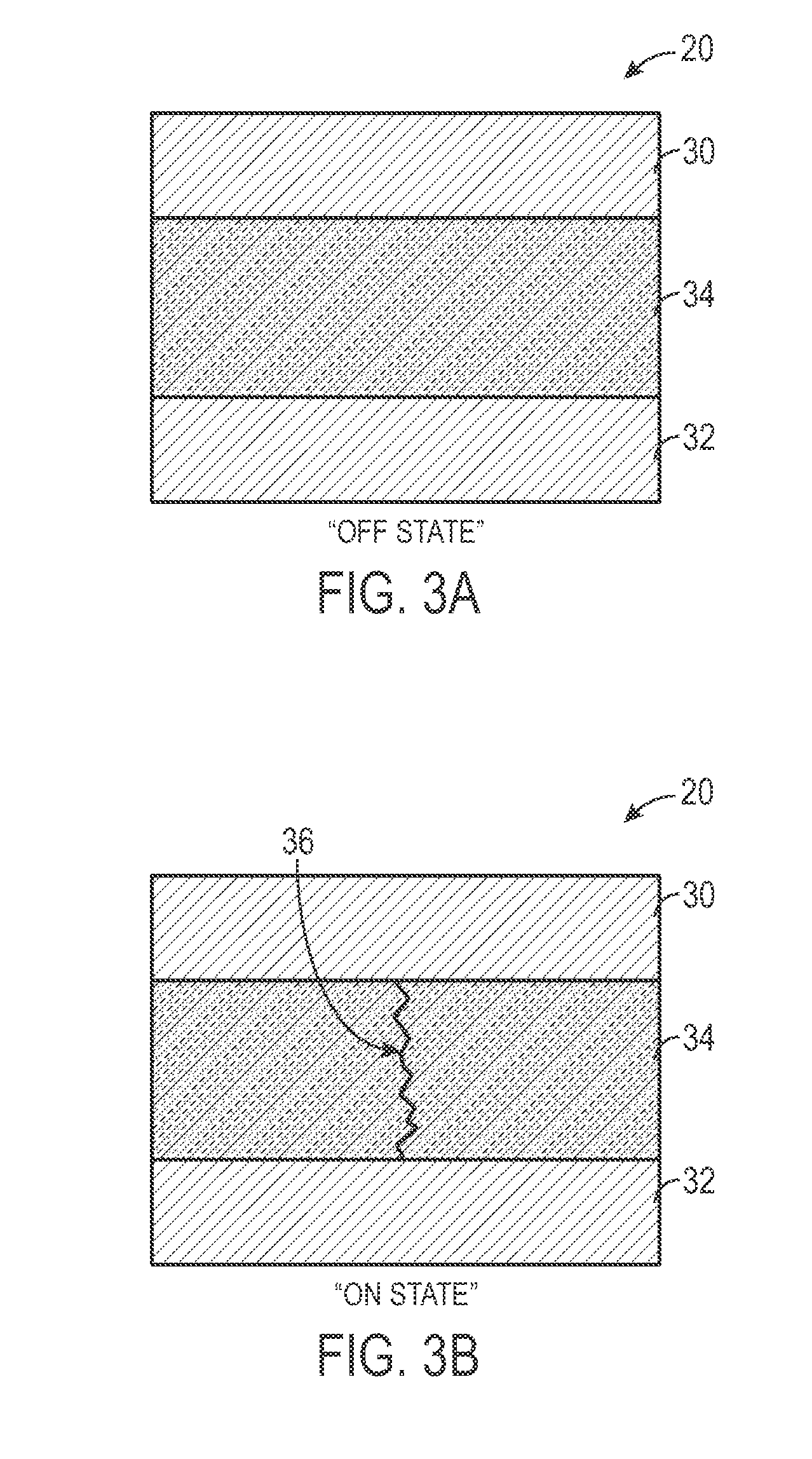Vertical memory cell for high-density memory
- Summary
- Abstract
- Description
- Claims
- Application Information
AI Technical Summary
Problems solved by technology
Method used
Image
Examples
Embodiment Construction
[0023]As discussed in further detail below, embodiments of the present invention relate to techniques for designing, manufacturing, and fabricating RRAM memory devices. In particular, certain embodiments provide vertical memory cell structures that may be implemented in RRAM devices. In one embodiment, cell area may be increased by word line height and / or interface surface characteristics to ensure the creation of a grain boundary that is suitable for formation of a preferential current path through an active layer of an RRAM memory cell. This may maintain continuum behavior while reducing random cell-to-cell variability that is often encountered at nanoscopic scales. By way of example, techniques relating to the formation of grain boundaries are disclosed in U.S. Pat. No. 7,883,929 (application Ser. No. 12 / 035,169), which is hereby incorporated by reference in its entirety. In another embodiment, the vertical memory cell structures may be formed in multiple-tiers to define a three-...
PUM
 Login to View More
Login to View More Abstract
Description
Claims
Application Information
 Login to View More
Login to View More - R&D
- Intellectual Property
- Life Sciences
- Materials
- Tech Scout
- Unparalleled Data Quality
- Higher Quality Content
- 60% Fewer Hallucinations
Browse by: Latest US Patents, China's latest patents, Technical Efficacy Thesaurus, Application Domain, Technology Topic, Popular Technical Reports.
© 2025 PatSnap. All rights reserved.Legal|Privacy policy|Modern Slavery Act Transparency Statement|Sitemap|About US| Contact US: help@patsnap.com



